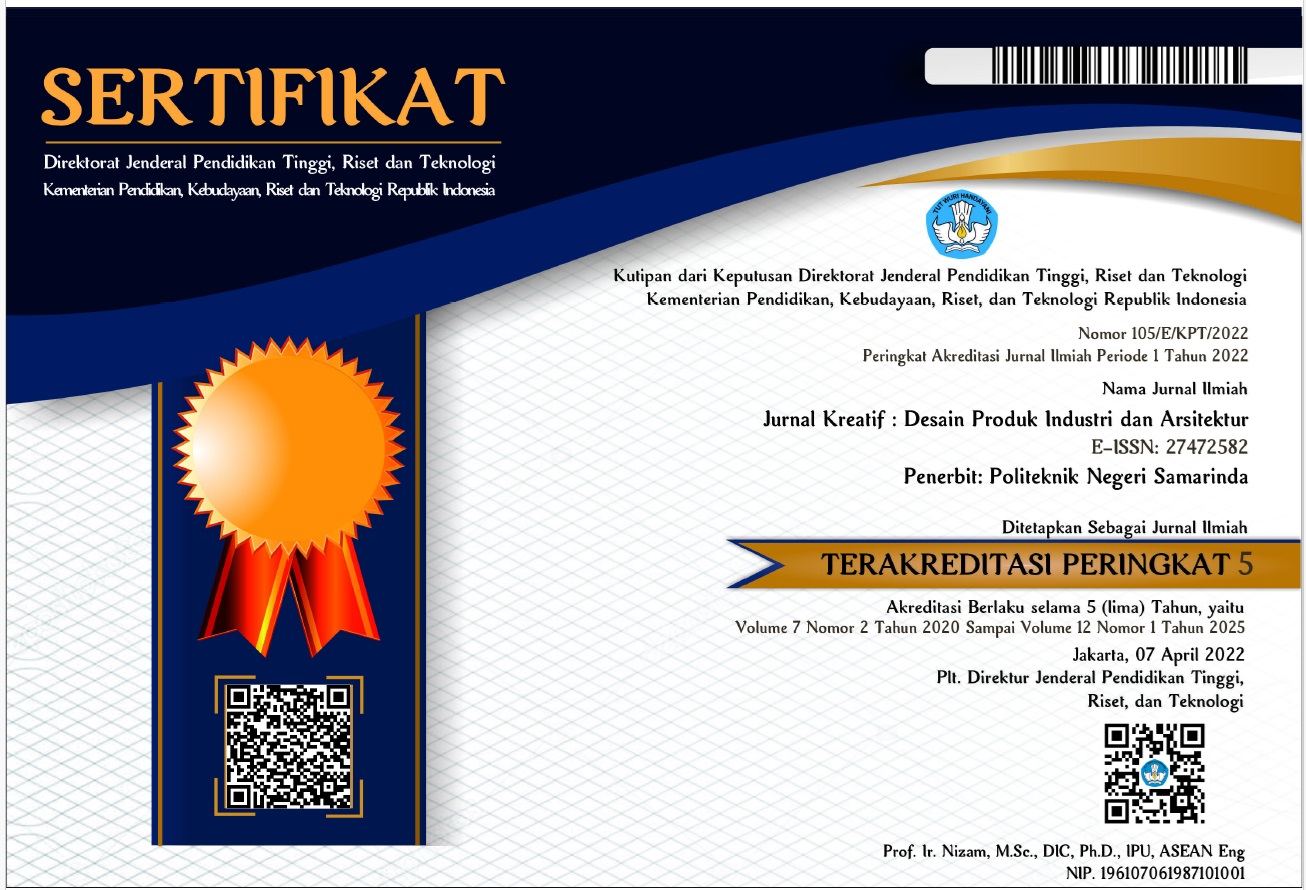PERANCANGAN SARANA PENYAPU JALAN RAYA UNTUK KAWASAN PERKOTAAN
Manual Road Sweeper Machine
 Abstract views: 541
,
Abstract views: 541
,
 pdf downloads: 555
pdf downloads: 555
Abstract
Development of the city in our country with all facilities and public facilities constructed within the framework of the modern era. However, the cleanliness of the city, especially the implementation of the highway is still impressive sweeping away from the modern age because of the cleanliness of the facility is still using a simple device. Although existing tools are more sophisticated street sweeper, but its use can not be sustained due to economic reasons and substantial operational costs. Through the design process, the design of the street sweeper means look for a solution that can ease the work of street sweeper. Designing started from existing products, street sweeper activity analysis and anthropometric measurements of components and users. Of this design obtained a draft means cheaper road sweeper and is expected to streamline and improve work efficiency street sweeper.
Perkembangan kota di negara kita dengan segala fasilitas dan sarana umum dibangun dalam kerangka jaman modern. Namun, dalam penyelenggaraan kebersihan kota terutama penyapuan jalan raya masih berkesan jauh dari jaman modern karena fasilitas kebersihan ini masih menggunakan perangkat yang sederhana. Walaupun sudah ada perangkat penyapu jalan yang lebih canggih namun penggunaannya tidak dapat berkelanjutan karena alasan ekonomi dan biaya operasional yang cukup besar. Melalui proses desain, perancangan sarana penyapu jalan ini dicarikan solusi yang dapat meringankan pekerjaan penyapu jalan. Perancangan dimulai dari eksisting produk, analisis aktivitas penyapu jalan dan komponen serta pengukuran anthropometri pengguna. Dari perancangan ini didapatkan sebuah rancangan sarana penyapu jalan yang lebih murah dan diharapkan dapat mengefektifkan serta meningkatkan efisiensi pekerjaan penyapu jalan.
Downloads
References
Fox, Robert W. & Alan T. McDonald,______ Introduction to Fluid Mechanics.
Frick, Heinz & Ch. Koesmartadi,______ Ilmu bahan bangunan.
Hari, Amanto, Drs. & Daryanto, Drs., 1999, Ilmu Bahan,
Jac. Stolk, ir., & C.Kros, ir.,1986. diterjemahkan Hendarsin, H. & Abdul Rachman A.,
Elemen Mesin - Elemen Kontruksi Bangunan Mesin edisisi ke21, Erlangga, Jakarta.
Lawson, Bryan. 1980. Bagaimana Cara Berfikir Desainer. Terjemahan Harfiyah Widiawati. Penerbit Jalasutra. Yogyakarta.
Neufert, Ernst, 1996, Data Arsitek jilid 1, Erlangga. Jakarta.
Nurmianto, Eko. 1998. Ergonomi: Konsep Dasar dan Aplikasinya. Guna Widya. Surabaya.
Peraturan Walikota Surabaya, Nomor 1 Tahun 2006, Tentang Pejabaran Tugas dan Fungsi Dinas Kebersihan dan Pertamanan.
Robert W. Fox & Alan T. McDonald, Introduction to Fluid Mechanics fifth edition, 1998, School of Mechanical Engineering Purdue University, Jhon Wiley & Sons. Inc.,
New York.
Sachari, Agus, 1989, Estetika Terapan, Penerbit Nova. Bandung.
Sachari, Agus. 2005. Metodologi Penelitian Budaya Rupa. Penerbit Erlangga. Jakarta.
Authors who publish with this journal agree to the following terms:
- Copyright on any article is retained by the author(s).
- The author grants the journal, right of first publication with the work simultaneously licensed under a Creative Commons Attribution License that allows others to share the work with an acknowledgment of the work’s authorship and initial publication in this journal.
- Authors are able to enter into separate, additional contractual arrangements for the non-exclusive distribution of the journal’s published version of the work (e.g., post it to an institutional repository or publish it in a book), with an acknowledgment of its initial publication in this journal.
- Authors are permitted and encouraged to post their work online (e.g., in institutional repositories or on their website) prior to and during the submission process, as it can lead to productive exchanges, as well as earlier and greater citation of published work.
- The article and any associated published material is distributed under the Creative Commons Attribution-ShareAlike 4.0 International License













